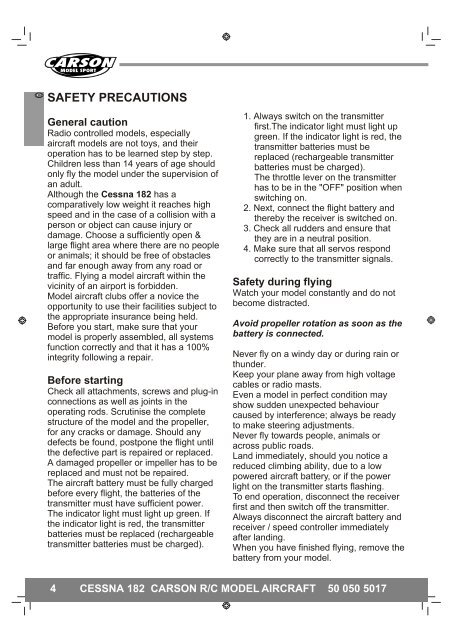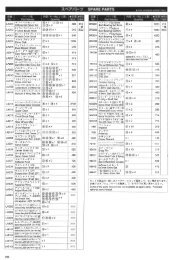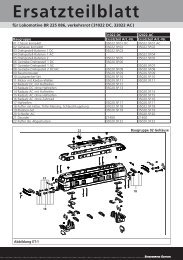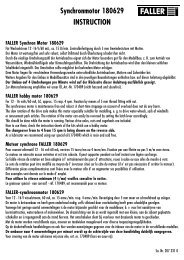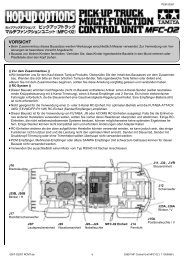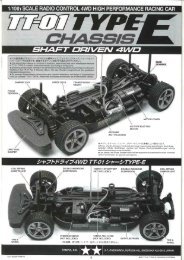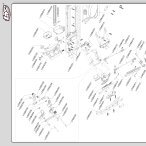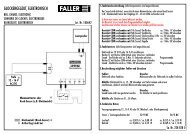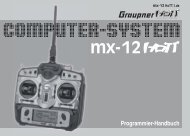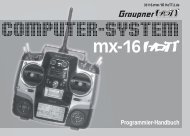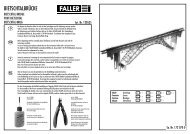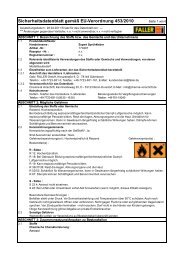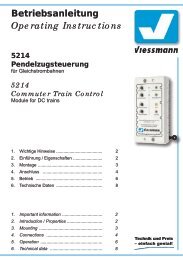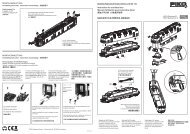You also want an ePaper? Increase the reach of your titles
YUMPU automatically turns print PDFs into web optimized ePapers that Google loves.
GB<br />
SAFETY PRECAUTIONS<br />
General caution<br />
Radio controlled models, especially<br />
aircraft models are not toys, and their<br />
operation has to be learned step by step.<br />
Children less than 14 years of age should<br />
only fly the model under the supervision of<br />
an adult.<br />
Although the <strong>Cessna</strong> <strong>182</strong> has a<br />
comparatively low weight it reaches high<br />
speed and in the case of a collision with a<br />
person or object can cause injury or<br />
damage. Choose a sufficiently open &<br />
large flight area where there are no people<br />
or animals; it should be free of obstacles<br />
and far enough away from any road or<br />
1. Always switch on the transmitter<br />
first.The indicator light must light up<br />
green. If the indicator light is red, the<br />
transmitter batteries must be<br />
replaced (rechargeable transmitter<br />
batteries must be charged).<br />
The throttle lever on the transmitter<br />
has to be in the "OFF" position when<br />
switching on.<br />
2. Next, connect the flight battery and<br />
thereby the receiver is switched on.<br />
3. Check all rudders and ensure that<br />
they are in a neutral position.<br />
4. Make sure that all servos respond<br />
correctly to the transmitter signals.<br />
traffic. Flying a model aircraft within the<br />
vicinity of an airport is forbidden.<br />
Model aircraft clubs offer a novice the<br />
opportunity to use their facilities subject to<br />
Safety during flying<br />
Watch your model constantly and do not<br />
become distracted.<br />
the appropriate insurance being held.<br />
Before you start, make sure that your<br />
model is properly assembled, all systems<br />
function correctly and that it has a 100%<br />
Avoid propeller rotation as soon as the<br />
battery is connected.<br />
integrity following a repair.<br />
Never fly on a windy day or during rain or<br />
thunder.<br />
Keep your plane away from high voltage<br />
Before starting cables or radio masts.<br />
Check all attachments, screws and plug-in Even a model in perfect condition may<br />
connections as well as joints in the show sudden unexpected behaviour<br />
operating rods. Scrutinise the complete caused by interference; always be ready<br />
structure of the model and the propeller, to make steering adjustments.<br />
for any cracks or damage. Should any Never fly towards people, animals or<br />
defects be found, postpone the flight until across public roads.<br />
the defective part is repaired or replaced. Land immediately, should you notice a<br />
A damaged propeller or impeller has to be reduced climbing ability, due to a low<br />
replaced and must not be repaired. powered aircraft battery, or if the power<br />
The aircraft battery must be fully charged light on the transmitter starts flashing.<br />
before every flight, the batteries of the To end operation, disconnect the receiver<br />
transmitter must have sufficient power. first and then switch off the transmitter.<br />
The indicator light must light up green. If Always disconnect the aircraft battery and<br />
the indicator light is red, the transmitter receiver / speed controller immediately<br />
batteries must be replaced (rechargeable after landing.<br />
transmitter batteries must be charged). When you have finished flying, remove the<br />
battery from your model.<br />
4 CESSNA <strong>182</strong> CARSON R/C MODEL AIRCRAFT 50 050 5017


